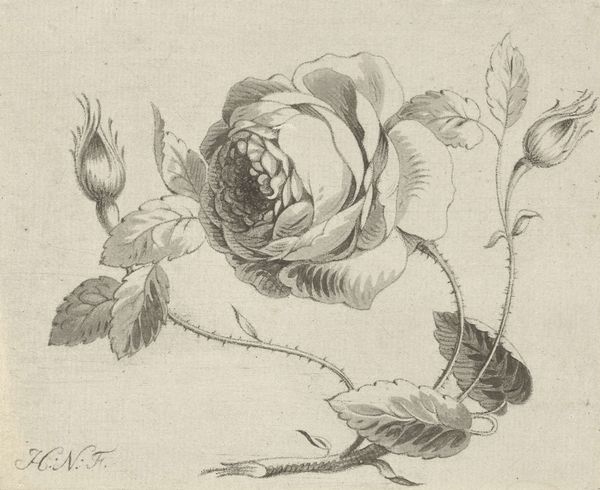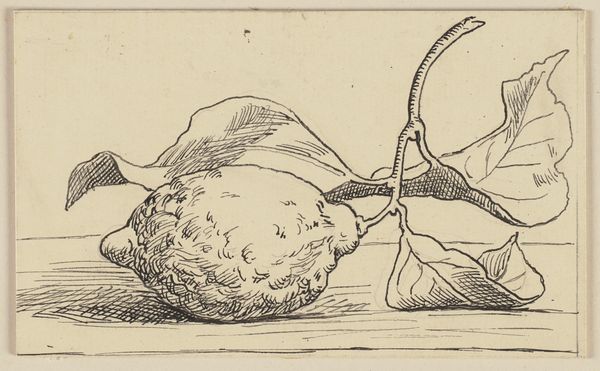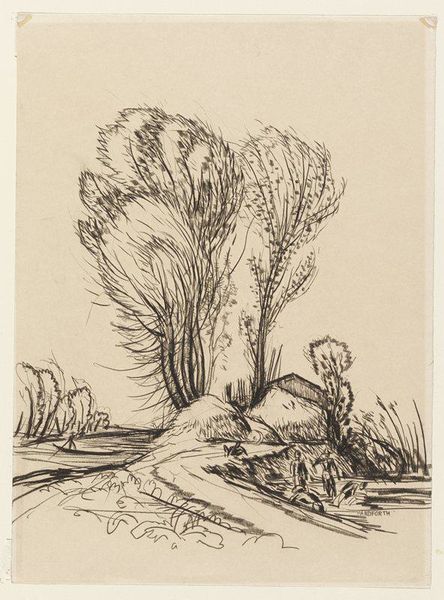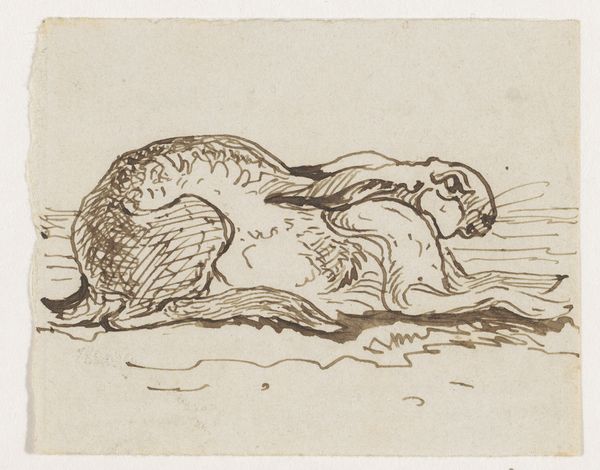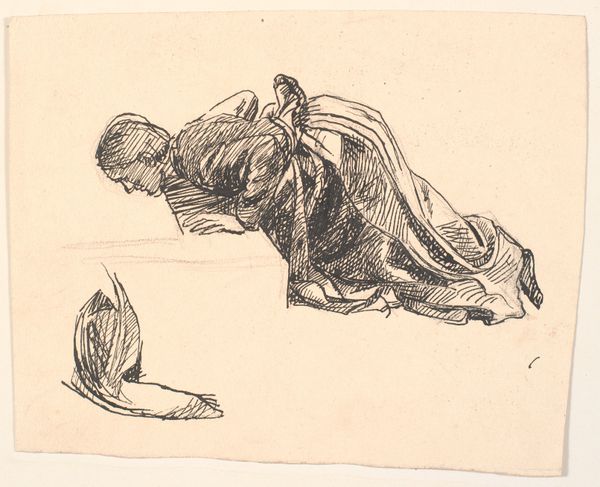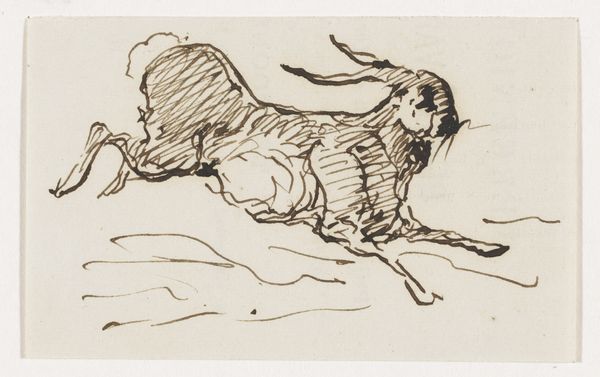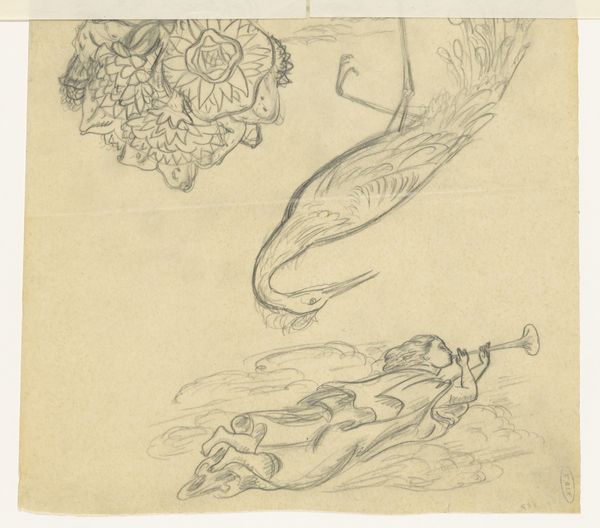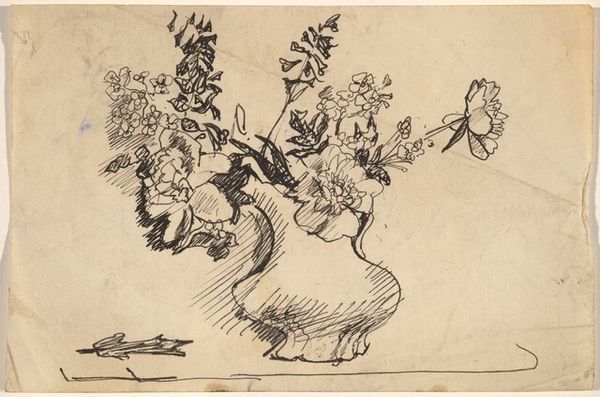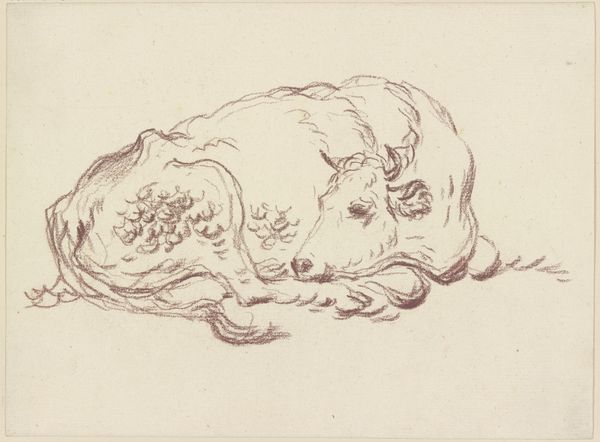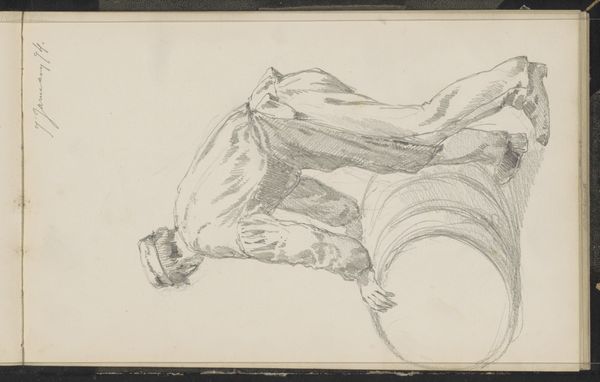
drawing, ink, pen
#
drawing
#
art-nouveau
#
ink drawing
#
pen sketch
#
ink
#
symbolism
#
pen
Copyright: Public Domain
Curator: Before us, we have "Drawing for the Primer: Rose" by Hans Thoma, crafted around 1905. The piece is rendered in pen and ink. It currently resides here at the Städel Museum. Editor: My initial reaction is that there's a real sense of fragility. The delicate lines capture the rose just as it's starting to wilt. Curator: Indeed. Thoma, deeply entrenched in the Symbolist movement, often employed natural elements like the rose to convey complex human emotions and existential themes. Think about the social climate in Europe at the time—rising industrialization, urbanization—many artists yearned for a return to nature and an expression of inner feelings. Editor: That yearning is palpable. Considering the era, the Symbolist movement also engaged quite actively with gender and identity. Roses, often associated with femininity and beauty, could have also served as a comment on societal expectations and constraints placed on women during that period. Curator: Certainly. And within the context of art education, the drawing may signify more than simple botanical study. Roses have appeared throughout history, embodying all that love, secrecy and beauty may signify in education. The question here may not have been simply drawing technique. Editor: So you’re suggesting that using a rose for teaching could subtly indoctrinate these concepts into the student’s mind from an early age. I find it thought provoking to consider how art itself can function as an instrument of cultural norms, particularly in a space designed for early development like primers. Curator: Precisely. Look closer, and we see a dynamic interplay between detailed precision and more spontaneous linework that is really emblematic of that era in art. Editor: Absolutely. And while we are standing here today examining this delicate drawing, its existence also encourages dialogue about artistic autonomy versus socially prescribed roles that are especially interesting to think about at that time, don't you think? Curator: A dialogue as beautiful and intricate as this very rose itself. Editor: I'd say that, from a single bloom, we've unraveled layers of meaning as thorny and deep as life itself.
Comments
No comments
Be the first to comment and join the conversation on the ultimate creative platform.

